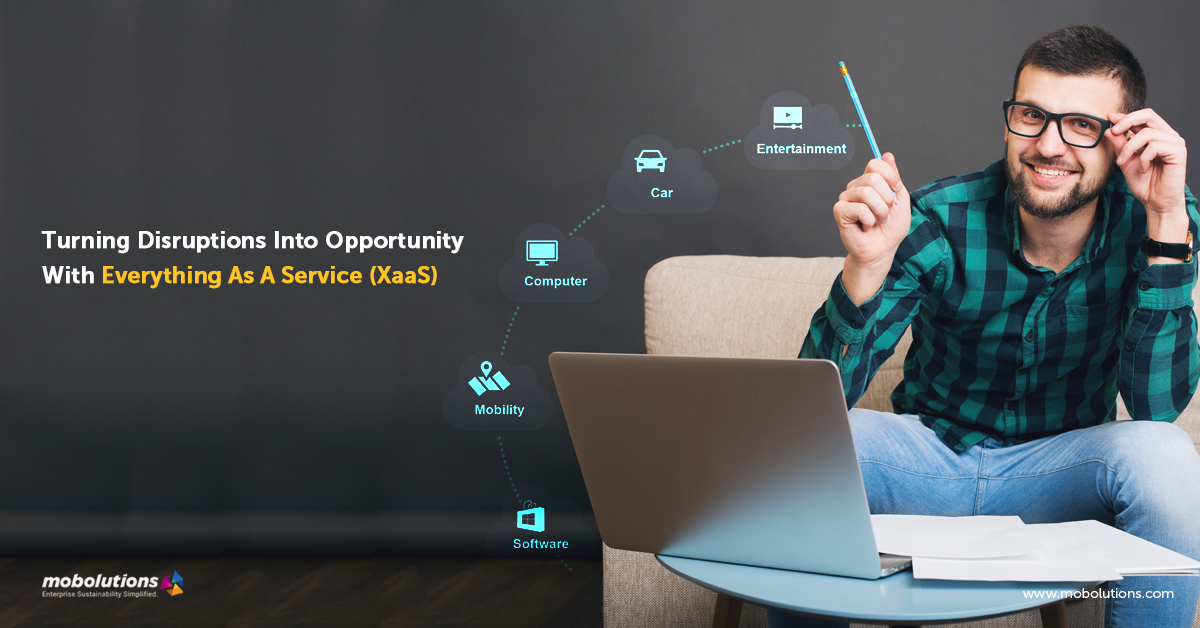Enterprises are getting better insights by tapping into data. To boost the business value of their companies’ analytics efforts, they need to optimize data in their channels and ecosystems. In this disruptive time of the global pandemic, data can illuminate how shifting consumer behavior can impact businesses.
Several media and telecommunication companies have already started to shift their business strategy to a pay-per-use model. To make their transition flexibly and to redefine revenue recognition, Everything as a Service (XaaS) successfully brings new products and experiences through subscription. When applied correctly, data can optimally deliver a company’s XaaS offerings to the marketplace.
Unlike the typical product-driven operating models, XaaS deeply understands the customers’ needs and delivers their demands with agility and flexibility. But how enterprises can navigate through the complicated and challenging business transition? A few real-time examples will address how some of the largest companies have monetized the XaaS model, personalized marketing offers, and gained new revenue streams.
A compelling user experience in e-Commerce
COVID-19 crisis has accelerated a shift towards online retail. E-commerce sales have spiked dramatically and according to the U.S Census Bureau e-commerce sales in 2020 amounted to 14 percent of total retail sales.
As it is pacing toward the XaaS business model, an online retailer is optimizing e-commerce and customer service with data. The company leverages customer behavior data to make sure that they have got the necessary insights into the pricing and payment methods. It has been differentiating the company’s business, driving competitive advantage, and optimizing their commerce. The company’s true differentiator has been the data-enabled personalization—they can deploy strategic online experience and customer-specific pricing. They have reshaped their supply chain resiliency as the payment has moved to flexible consumption-based invoicing rather than just credit cards. They were able to tweak their selling mechanism using the SAP BRIM solution while gaining a big uptake in online sales.
To access the transaction processing in a centralized manner, they also use SAP Data Intelligence—a data orchestration tool that brings data from different systems to get a coherent view. It has enabled them to configure offerings into comprehensive solutions.
From B2B to D2C
A food supplying company in the UK used to be a pure B2B vendor until recent years. They were delivering foods to restaurants, care homes, hospitals, schools, and restaurants. Since most of their customers were closed down during the pandemic, they had to adopt the Direct-to-Consumer (D2C) operating model.
The company chose the SAP e-Commerce platform. It was completely a new approach to pricing, billing, and revenue management. The company could enhance key capabilities to drive adoption, customer retention, maximize cross-selling and upselling functions, and better anticipate shifts in demand for their services.
The Bicycle as a Service!
A multinational sporting goods retailer had realized that people who are interested in cycling don’t want to invest in a bicycle. Without a complete overhaul of its operating model, the company introduced a pay-as-you-go rent service. They focused on growing customer consumption of offerings and embedded flexible consumption in their service model.
The connected user experience guaranteed against theft and breakages. The users could easily get it fixed at stores close by or through the company’s partners. The subscription model allowed service renewal and customer support activities to be more effective and streamlined.
Coffee as a Service!
XaaS model has enabled a responsive, customer-centric, coffee subscription for a UK company. They leveraged the capabilities of SAP Predictive Analytics to maximize the availability of their organic coffee and other hot drink products.
SAP helped them improve overall revenue streams and build recurring, sustainable cash flows. As Gartner has predicted that by 2025, 40% of the physical experience-based businesses will improve their financial results by extending into a paid virtual experience, the company could grow the revenues.
Lighting as a Service
A world leader in connected LED lighting systems turned to SAP Analytics for its enterprise analytics strategy. It enabled them to deliver enhanced value to the customer and improve revenue.
Not only did they cut the cost of lighting by 30%, the interactive IoT platform has also given the company real-time insights into their customers’ lighting consumption. They could charge the customers’ bill based on the amount of light they used and use the data to make better decisions. They have evolved from selling light bulbs to selling a service to help people optimize their use and cut cost.
Outcome-based Pricing
Beyond pricing based on usage, a German life science company has transitioned to outcome-based pricing. The challenge was that the farmers were uncertain if the fungicide they were using was effective on the crop.
The company built a predictive model to establish that certain products of them yield a better crop. They moved to outcome-based pricing, where the farmers pay a percentage of gain for using the company’s product. They found out that 74% of farmers are more likely to purchase a product with outcome-based pricing.
Data-driven business opportunities of XaaS
- Offer flexibility in billing & collections to prevent churn
- Move towards personalized offers to increase best-of-breed solution
- Enable solution selling
- Provide enriched offerings to upsell
- Accelerate recurring revenue streams
- Optimize the cost structure
- Handle demand hit with a business built for scale on demand
- Reduce TCO from the first touchpoint through the entire lifecycle
In addition to reorienting business capabilities, XaaS benefits customers with flexibility and affordability. While laying the foundation for broader strategic shifts, the vendors can effectively make sure financial predictability, and enhanced customer relationships.
Mobolutions enables a successful transformation into a service-oriented company by rethinking companies’ business model, and transforming the price/value equation. We help them simultaneously innovate multiple components of the business configuration, product offering, and customer experience.
